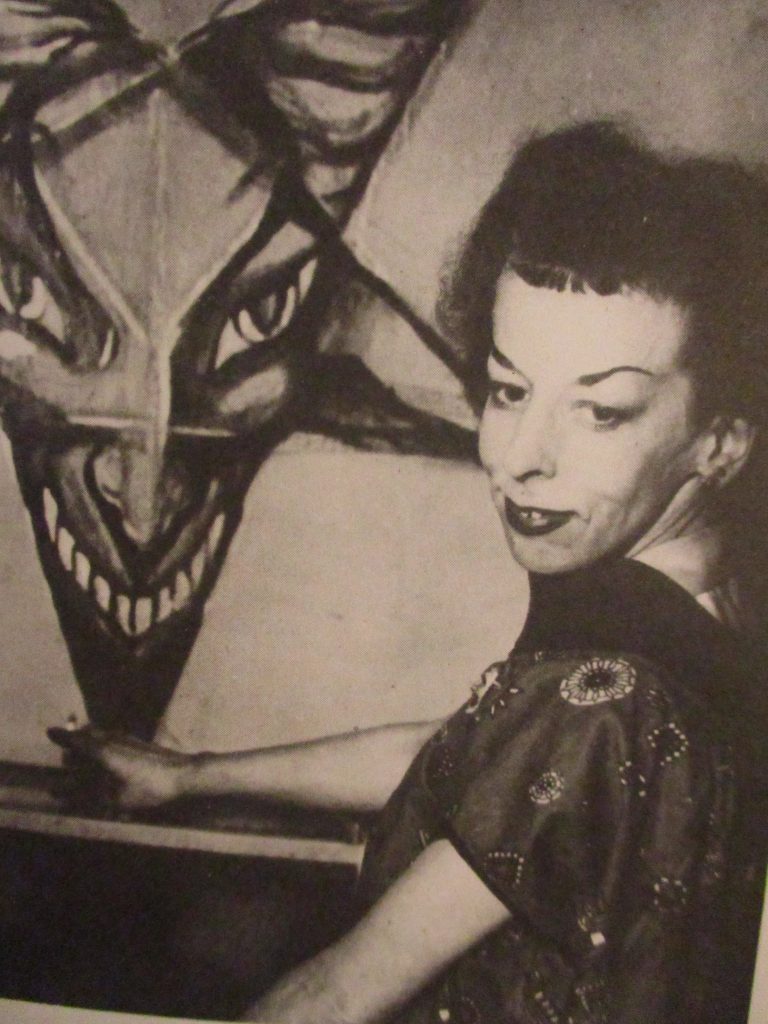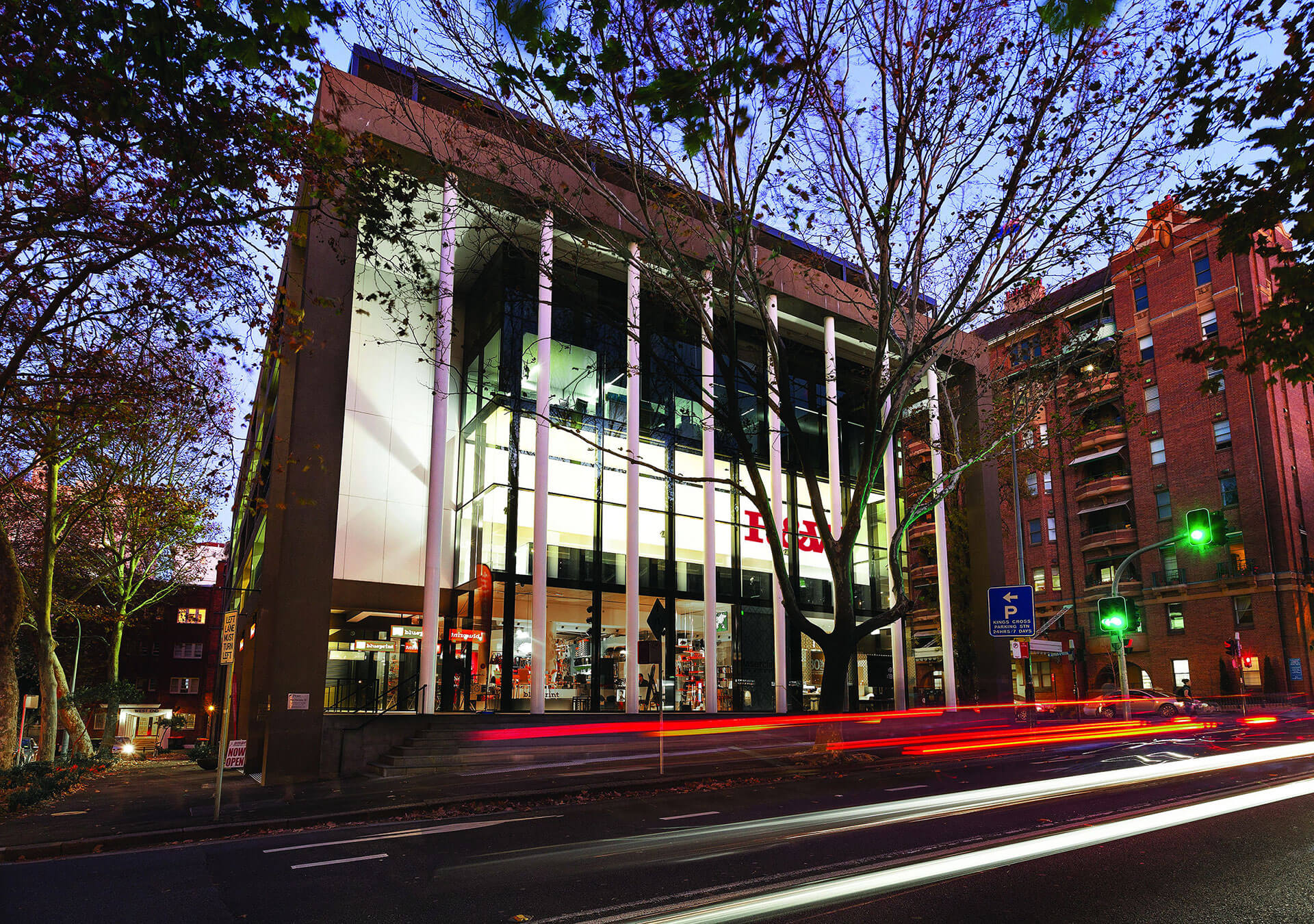Rosaleen Norton, witch-at-large

Kings Cross in the 1970s was very, very different to today’s Darlinghurst Road strip.
It harboured bohemian eccentrics and misanthropes on the edges of society such as Rosaleen Norton, who claimed to be a witch.
A new movie has just been released about her extraordinary life.
Born Rosaleen Miriam Norton (2nd October 1917- 5th December 1979) in Dunedin, New Zealand, on “a dark and stormy night” as she puts it, at 4:30am, her occult name was “Thorn”.
She adhered to a form of pagan witchcraft devoted to the mythological Greek god Pan, an ancient half man-goat god of the wild who associated with nymphs.
She lived much of her later life in Kings Cross leading her to be coined the “Witch of Kings Cross” in some tabloids and from where she had conjured her own coven of witches.
She was an esoteric artist. Her paintings often depicted images of supernatural entities such as pagan gods and demons, sometimes involved in highly erotic acts.
These caused controversy.
The authorities dealt with her work harshly. Police removed some of her work from exhibitions and attempted to prosecute her for public obscenity.
According to her later biographer, Nevill Drury, “Norton’s esoteric beliefs, cosmology and visionary art are all closely intertwined, and reflect her unique approach to the magical universe.”
She was inspired by the “night” side of magic, emphasising darkness and studying Qlipoth (evil forces) alongside forms of sex magic.
Norton was born a witch she said. She claimed she’d been born with pointed ears, blue markings on her left knee and a strand of flesh that hung on her body.
Her family moved to Lindfield, Sydney in 1925 when she was eight.
Rosaleen never liked being conventional. She disliked most other children. She described her childhood as “generally wearisome with periods of … prying adults, detestable or depressing children whom I was supposed to like, and parental reproaches.” She kept to herself, sleeping in a tent pitched in the garden for three years, keeping a pet spider at the entrance named Horatius, named after the Roman General, who saved Rome from invaders, as well as other pets including cats, lizards, tortoises, toads, dogs and a goat.
She was expelled from school for being disruptive and drawing images of demons and vampires. Teachers said she was a corrupting influence on other pupils. She then attended East Sydney Technical College to study art.
In 1935, Rosaleen met and then married Beresford Lionel Conroy. They hitch-hiked across Australia. Conroy then enlisted as a commando, serving in New Guinea during the World War II. Norton was forced to live in a stable. She demanded a divorce, which was settled in 1951. During their marriage, the couple had previously lived at 46 Bayswater Road, Kings Cross, now the Elizabeth Bay Lodge retirement home.
Rosaleen then met a younger gay man, Gavin Greenlees (1930–1983) a successful poet. They hitch hiked to Melbourne for Norton’s art exhibition. It did not go well.
Police raided the gallery and removed four “obscene” paintings. Norton was charged under the 1928 Police Offences Act. Her barrister successfully argued the images were not obscene and she was awarded £4/4/- in compensation from the police.
They then moved into a rundown house at 179 Brougham Street, Woolloomooloo.
Several of the local cafes in the area, such as the Arabian, the Apollyon and the Kashmir, displayed some of her artworks and she became well known in Kings Cross.
She seemed to revel in media attention and once appeared wearing a tall black pointed hat and carrying a cat and broom stick.
In 1955, a mentally ill adolescent vagrant named Anna Hoffman swore at a police officer and was subsequently charged. At her trial she claimed that her life had fallen apart after taking part in a Satanic Black Mass run by Rosaleen Norton, a claim which was picked up by the sensationalist tabloids. Norton, who did not consider herself to be a Satanist but was a pagan, denied these claims. Hoffman later admitted that she had made them up.
With this public outcry against her work, the police once more began to act against her. In 1955, they successfully took the proprietor of a local restaurant, the Kashmir, to court, for displaying some of her works publicly. That same year, the police raided Norton and Greenlees’ home, and accused them of performing “an unnatural sexual act”, evidence for which they had obtained in a photograph displaying Greenlees in ritual garb flagellating Norton’s buttocks. It was subsequently revealed that the photos had been taken at Norton’s birthday party, and stolen by two members of their coven, Francis Honer and Raymond Ager, who planned to sell them to The Sun newspaper for £200.
Meanwhile, the successful English classical music composer and conductor, Sir Eugene Goossens (1893–1962), who was then in Australia and who had an interest in the occult, read a copy of “The Art of Rosaleen Norton” and wrote to her. They met and became friends and lovers. In March 1956, Goossens was arrested attempting to bring 800 erotic photographs, some film and ritual masks into Australia from London. He was charged under Section 233 of the Customs Act. In court, he pleaded guilty to bringing “blasphemous, indecent or obscene works” into the country and was fined £100. He resigned his positions at both the Sydney Symphony Orchestra and New South Wales Conservatorium of Music and returned to Britain, his international career ending in disgrace. Norton’s relationship with Goossens ended.
Soon the life that Norton had held with Greenlees also collapsed, as he was admitted to Callan Park Hospital in 1955, diagnosed with schizophrenia. Norton continued to visit and support him, and in 1964 he was let off on temporary release but suffered a schizophrenic attack and attempted to kill Norton with a knife before being re-admitted. He would only be discharged permanently in 1983, approximately four years after her death.
Witchcraft was still illegal in New South Wales at the time. The English Witchcraft Act of 1735, still in force in NSW, would not be repealed in NSW until 1971. Norton openly declared herself as a witch. Along with selling her paintings she also made charms and cast hexes for people using witchcraft to supplement her income.
Norton died in December 1979 from colon cancer at the Sacred Heart Hospice for the Dying, Darlinghurst, Sydney, still worshipping the pagan god Pan.
On her death bed she said, “I came into the world bravely; I’ll go out bravely.”
Now, a new movie, “The Witch of Kings Cross”, has recently been made about her incredible but bizarre life. It is not being shown in mainstream cinemas but is available via Amazon Prime, Google Play, iTunes and Vimeo.
Produced by Sonia Bible it is told “in her own words”. It weaves stylised drama and erotic dancers with never-before-seen artworks, diaries and scrapbooks and has been awarded an official entry in the French L’Étrange Festival of Arts & Entertainment.
Watch a preview clip of the movie here: https://www.youtube.com/watch?v=jQSB8AtXqi0
See Ms Norton’s cafe interview at this link: https://www.youtube.com/watch?v=6XX_zSeaeQY
The City of Sydney Council’s Kings Cross library local history collection, 52 Darlinghurst Road, Kings Cross, also contains an interesting selection of books about her life and times.
By Andrew Woodhouse
Heritage Solutions





